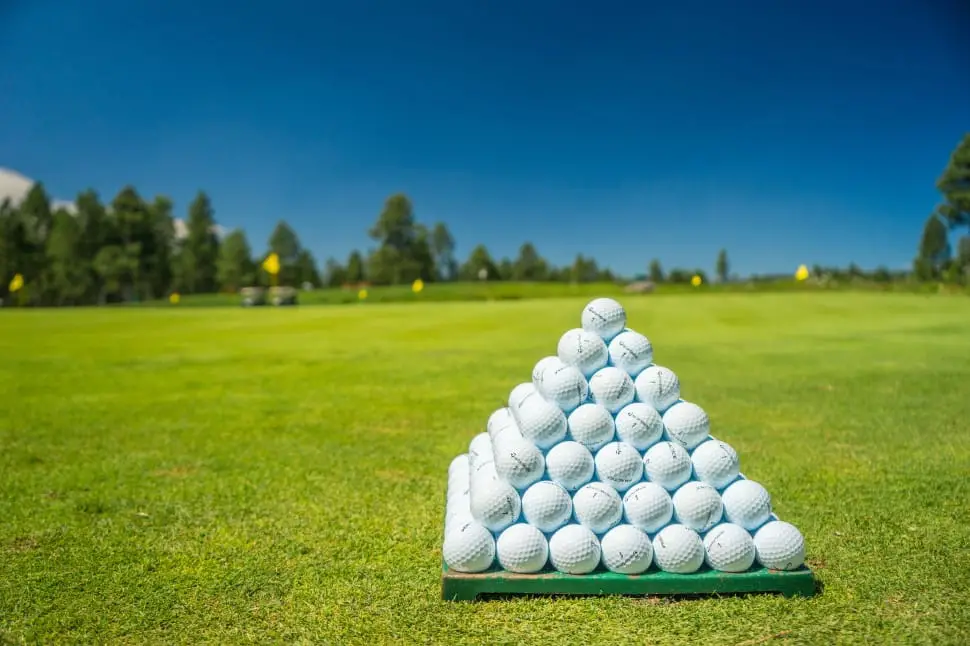It’s very important to understand how these fundamentals affect the ball’s performance and your game. Read on to learn more.
If you’re just starting out, we recommend reading through our guide and top 10 picks for the best golf balls for beginners to get started on the right track.
Short on Time? Refer to Our Golf Ball Selector Chart
| Low Swing Speed (Average Drive = 190-220 yds) | Medium Swing Speed (Average Drive = 220-260 yds) | High Swing Speed (Average Drive = 260-280 yds) | Very High Swing Speed (Average Drive = 280-300+ yds) | |
| Increase Distance | –Taylormade Rocketballz –Bridgestone E6 Speed –Titleist Velocity | –Titleist NXT Tour | –Bridgestone Tour B RX | –Titleist ProV1 –TaylorMade TP5x –Callaway 2020 Chrome Soft –Srixon Zstar 6 XV |
| Better Consistency | –Bridgestone E6 Soft –Callaway SuperHot –Wilson Duo –Srixon Soft Feel –Volvik Vibe | –Srixon Qstar –TaylorMade Project (a) –Wilson Duo Urethane | –Bridgestone 2020 Tour B RXS –Srixon Qstar Tour | –Bridgestone Tour B X –Volvik S4 –Taylormade TP5 –Callaway Chrome Softx |
| Improve Spin | –Titleist DT TruSoft –Volvik Vivid –Callaway SuperSoft –Wilson Duo Spin | –Titleist Tour Soft | –Volvik S3 | –Srixon Zstar –Titleist ProV1x |
Golf Ball Anatomy
There are three key elements that make up a golf ball: dimples, core, and cover. Each of these have different effects on your ball.
Dimples

Dimples in the golf ball help it fly by creating a thin layer of air that “grabs” the ball’s surface, increasing lift and decreasing aerodynamic drag.
Varying patterns, sizes, and shapes affect the ball’s distance, spin rate, and stability. A totally smooth golf ball hit by a pro would travel around half the distance of today’s modern golf balls!
Most golf balls on the market today have a dimple range of 300 to 450.
Core
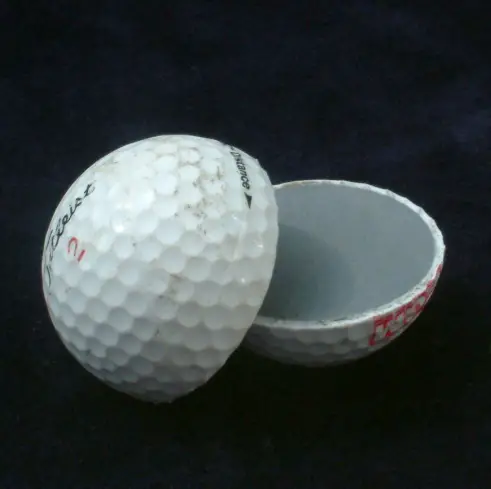
The ball’s core drives compression, which is a result of the ball’s overall density. The more experienced the golfer, the faster their swing speed- this is typically where a higher compression ball is needed.
Consider this: a golf ball’s shape briefly transforms at club impact, and the core needs to support that transfer of energy.
Less experienced golfers or those with lower swing speeds usually prefer lower compression balls to help them gain distance.
Cover
The cover, or wrap of the golf ball can affect the feel and control of the ball. Covers come in two main types: Surlyn and urethane. Surlyn covers are the most durable and have lower spin. Urethane covers greater control and softer feel- these covers are usually preferred by skilled players and are found on higher-end balls.
Golf Ball Selector: How Golf Ball Construction Affects Your Performance
Golf balls come in five main construction types that involve different materials and technology, each of which can impact your game.
Let’s walk through the most common ball types on the market today:
1-Piece Golf Balls
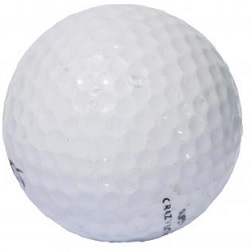
Construction: typically made 100% from Surlyn, molded with dimples
Best for: Beginners, driving ranges, and mini golf courses
Pros: Highly durable and inexpensive
Cons: Poor feel, minimized spin
2-Piece Golf Balls
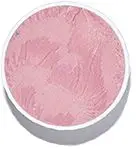
Construction: Solid core made from rubber or Polybutadiene (a synthetic rubber), surrounded by an exterior cover of Surlyn or urethane.
Best for: Beginners
Pros: Highly durable, good distance coverage
Cons: Harder to control
3-Piece Golf Balls
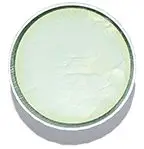
Construction: Solid liquid or rubber core, wrapped in a secondary layer of enhanced rubber, surrounded by an exterior cover of Surlyn, Balata, or urethane.
Best for: mid-level and experienced players
Pros: More spin than 2-piece balls, greater feel and control
Cons: Higher cost and less distance than 2-piece balls
4-Piece Golf Balls
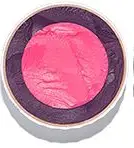
Construction: Solid rubber center, inner cover layer, then a middle cover, surrounded by a urethane exterior cover. 4-piece balls typically have higher dimple counts than their 2-piece and 3-piece counterparts.
Best for: Professionals and experienced players
Pros: More spin than 3-piece balls (especially when hitting with irons), and better performance on the greens.
Cons: Less forgiving, higher cost
5-Piece Golf Balls
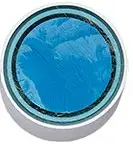
Construction: Solid rubber center, inner cover layer, wrapped in a middle cover which is wrapped in another layer, surrounded by a urethane exterior cover. The Taylor Made Penta was the first 5-piece golf ball, introduced in 2009.
Best for: Professionals and experienced players
Pros: Unparallelled spin and performance
Cons: High cost, least distance
Golf Ball Compression Guide: Why It Matters to Your Game
Simply put, compression is a measurement of how much a ball compresses against the club face at impact. The ball launches as that compression is released, which directly affects your shot distance.
Typically balls are marked with compression numbers, ranging from 70 to 110. Overall, these ranges are split into three compression ratings to make it easy for you to determine which compression rating is best for you.
Which Compression is Right for You?
If your swing is 85mph or less
Low-compression golf balls are the best bet here, as every yard matters in your game. Beginners, juniors, ladies, and seniors will benefit most from low compression. Look for a rating 80 or lower.
If your swing is 85-104mph
Mid compression golf balls are suggested for you, as low compression balls could create control issues. These balls will provide a combination of control and distance for most players. Look for a compression rating of 80 to 90.
If your swing is 105mph or above
Your best bet is a high compression or premium ball, as you’ll generate good distance with nearly any ball due to your strong swing speed. Low compression balls could result in a lack of control. Target a compression rating of 90 or above.
Golf Ball Selector:How to Choose the Right Golf Ball
Use this three step process to look at some key aspects of your game to help determine which golf ball is best for you:
Step One: What’s Your Weakness?
Really think about your game as it is today. Are you suffering from low distance? Is aim a problem? Is spin getting to you? These answers will help guide you.
Step Two: What’s Your Swing Speed?
If you don’t have access to a launch monitor, there’s a simple way to determine your swing speed. Use the following formula:
- Find your average driving distance by adding your drive totals together (typically 20 or more drives is recommended) and dividing by the total number of drives
- Subtract a “roll factor” of 5% of the drive average by multiplying your average driving distance by .95 (average driving distance x .095).
- Divide your average driving distance minus roll factor by 1.75, which will determine your ball speed at impact.
- Divide your ball speed at impact number by 1.5 to calculate your estimated swing speed.
If that all seems too complicated, you can use the ranges below to categorize the speed of your swing:
- Average Swing Speed: Average drive of 220 yards or less
- Medium Swing Speed: Average drive between 220-260 yards
- High Swing Speed: Average drive 260 yards or more
Step Three: Use the Chart Below to Find the Best Golf Ball for You
There are many tools available online to help you choose the best golf ball – we’ve made it easy with the below chart.
| Low Swing Speed (Average Drive = 190-220 yds) | Medium Swing Speed (Average Drive = 220-260 yds) | High Swing Speed (Average Drive = 260-280 yds) | Very High Swing Speed (Average Drive = 280-300+ yds) | |
| Increase Distance | –Taylormade Rocketballz –Bridgestone E6 Speed –Titleist Velocity | –Titleist NXT Tour | –Bridgestone Tour B RX | –Titleist ProV1 –TaylorMade TP5x –Callaway 2020 Chrome Soft –Srixon Zstar 6 XV |
| Better Consistency | –Bridgestone E6 Soft –Callaway SuperHot –Wilson Duo –Srixon Soft Feel –Volvik Vibe | –Srixon Qstar –TaylorMade Project (a) –Wilson Duo Urethane | –Bridgestone 2020 Tour B RXS –Srixon Qstar Tour | –Bridgestone Tour B X –Volvik S4 –Taylormade TP5 –Callaway Chrome Softx |
| Improve Spin | –Titleist DT TruSoft –Volvik Vivid –Callaway SuperSoft –Wilson Duo Spin | –Titleist Tour Soft | –Volvik S3 | –Srixon Zstar –Titleist ProV1x |
Golf Balls: Frequently Asked Questions
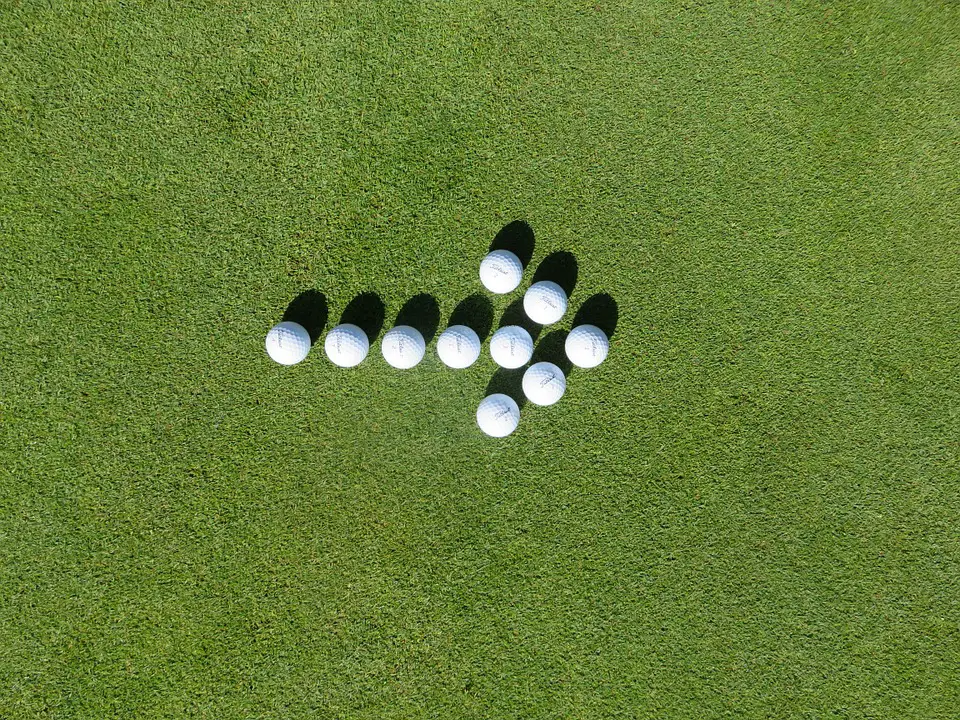
What makes a ball legal?
The PGA, LPGA, and USGA all have the same set of rules and regulations for acceptable golf balls.
Luckily, these rules are pretty straightforward:
- Golf balls must not be asymmetrical.
- Golf balls must not have a weight higher than 1.620 ounces (or 45.93 gm) – there is no minimum weight.
- Golf balls must have a diameter greater than 1.680 inches (or 42.67 mm) – there is no maximum size.
- Golf balls must meet specific distance and velocity capability requirements throughout rigorous trials. Ball manufacturers have to submit two-dozen ball samples to the USGA for testing each year to make sure their product is in compliance.
What are the best golf balls to use in the winter?
Temperature has a key effect on ball performance – for every ten degrees lower, you’ll sacrifice distance and speed. Higher-compression golf balls will feel (and play) like a rock in lower temperatures due to the density of the ball. For these reasons, you may want to try a lower-compression ball when getting out for a round in cold weather.
Can I use different types of golf balls?
There are no rules prohibiting the use of multiple types of balls, so feel free to mix and match as you see fit. Keep in mind that you’ll probably be better off sticking to one type of ball as you perfect your game and get a feel for your ball of preference. Not to mention, the cost of “collecting” several types of balls can get out of hand quickly.
Do dimple counts matter?
While balls with higher dimple counts perform better, professionals have found that there is minimal difference between most standard dimple counts on balls. We don’t recommend paying a premium between the same general type of ball only due to a difference in dimple count.
Should I buy recycled golf balls?
It depends. Golf balls can get pricey, especially if you’re new to the game and maybe losing a lot of balls in the deep rough. You can find recycled golf balls easily and inexpensively from retailers online, but consider that you’ll get a better performance from a new ball, which is key when you’re learning the game.
Should I buy lake balls?
It’s tempting to buy these balls, as they are cheap! That savings comes with a greater price, which is reduced distance. We recommend using these if driving balls on your personal property and for practice only.
What’s the best way to clean golf balls?
Simple! You’ll need the following items:
- Dishwashing liquid or mild dish soap
- A Bucket (any large container or 5-gallon bucket from a home improvement store will do)
- Scrubbing tools (soapy towel, sponge, old toothbrush, etc.)
- Drying towel
Just fill the bucket halfway with warm soapy water, allowing your golf balls to soak for about 15 to 20 minutes. Scrub or wipe the golf balls as needed, rinse, dry, and put them back in your bag for next time!
Can I wash golf balls in the dishwasher?
If you want to clean your golf balls in your dishwasher, go ahead – be sure to put them on the top rack. Keep in mind that the dishwasher method is best for golf balls that don’t have too much mud or dirt on them.
Conclusion
There’s much to consider when choosing the best golf ball for you. The best way to get a solid feel for what works best is by considering all of the information above – use this as a starting point.
Be sure to get out on the driving range and the course and experiment with a few different types to get a feel for what your perfect match is in a golf ball.
Now that you’ve got a solid foundation in your ball choice, consider improving your stance and making sure you’ve got the proper club length and grip size. You’ll be on your way to a great game and a lower handicap in no time.

